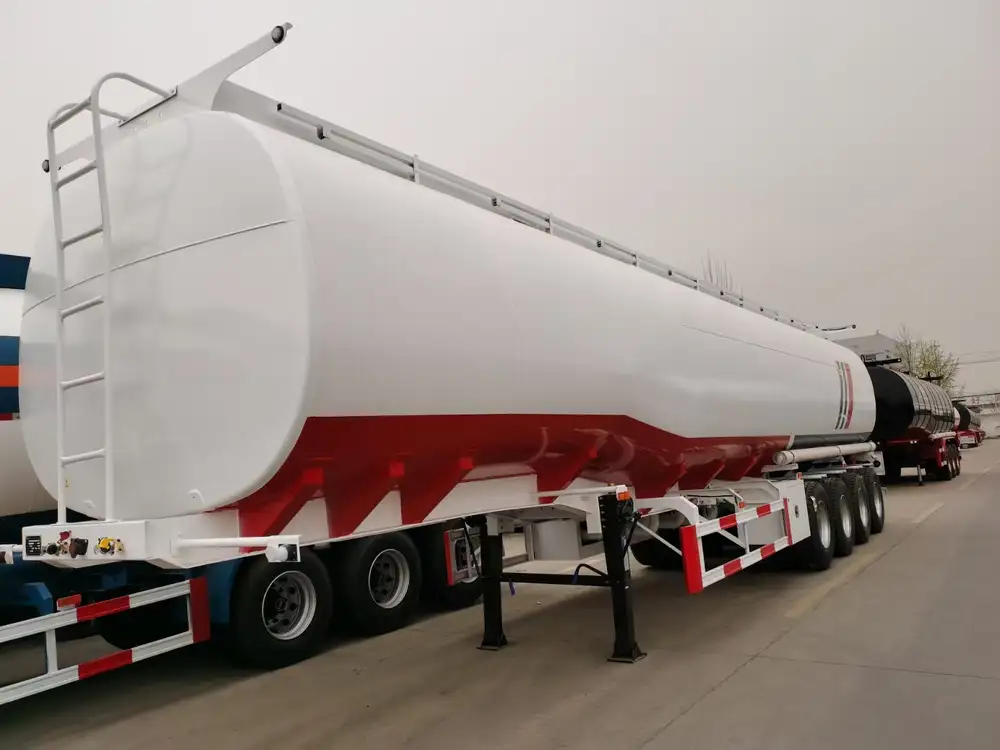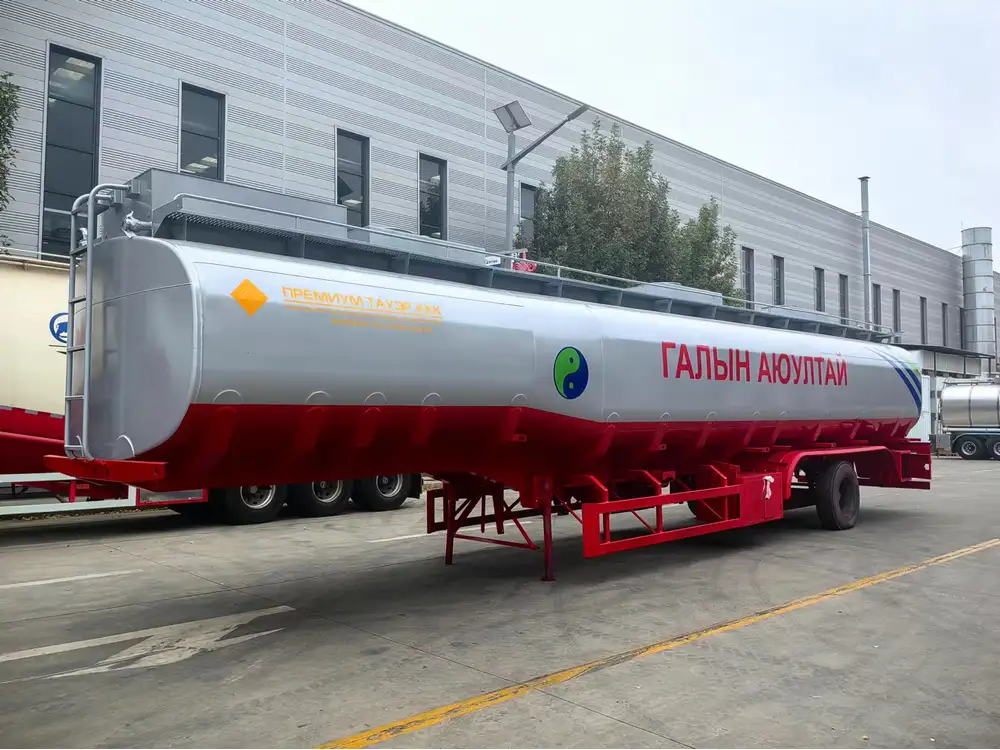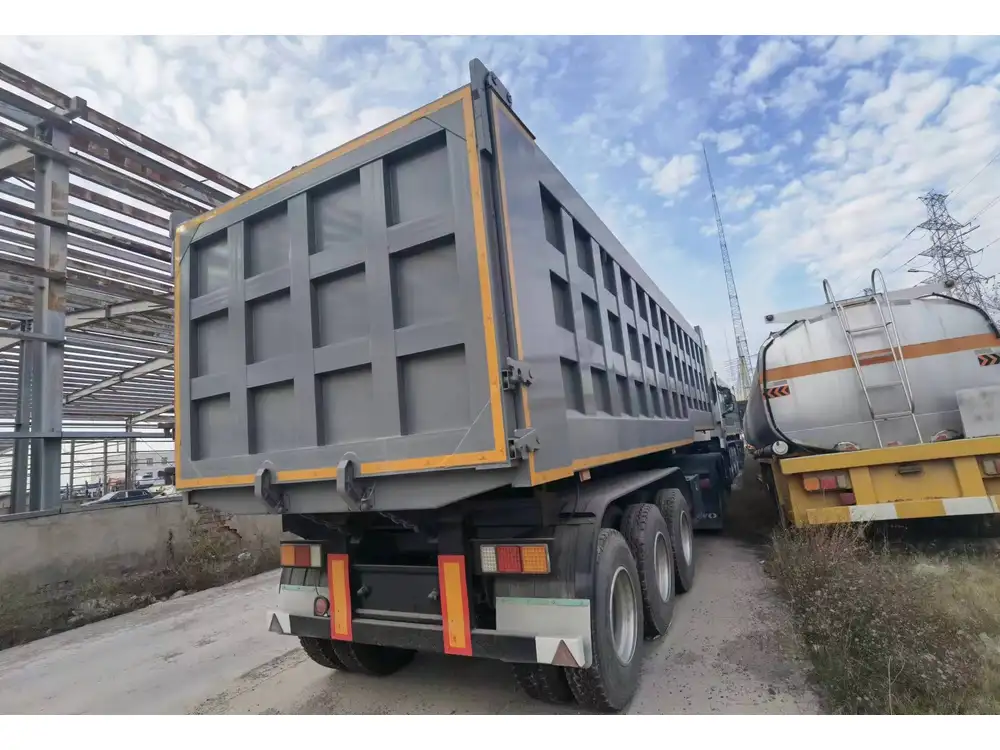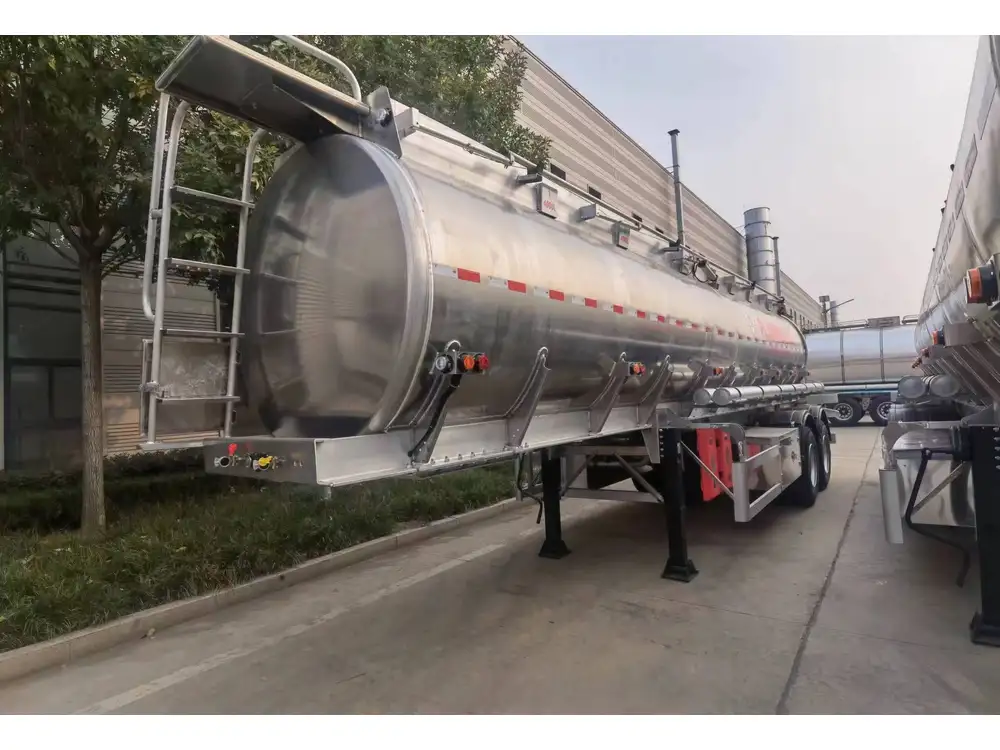When we delve into the maritime world of oil transportation, one of the most pressing questions that arises is, “How much oil can a tanker hold?” This inquiry is not just an academic exercise; it has real-world implications for logistics, cost management, and environmental considerations. As manufacturers of semi-trailers, it’s imperative to understand this industry to effectively cater to our clients in the transport sector.
Tanker Classification: Types and Capacities
To answer the core query, one must first grasp the different types of tankers available in the shipping industry. Each tanker is designed for specific capacities and types of cargo. Here’s a succinct overview:
| Tanker Type | Capacity Range (DWT) | Description |
|---|---|---|
| Handysize Tankers | 10,000 – 40,000 DWT | Small, versatile, used for coastal shipping. |
| Medium Range (MR) | 40,000 – 80,000 DWT | Suitable for refined oil products and lighter crude. |
| Aframax Tankers | 80,000 – 120,000 DWT | Ideal for transporting crude oil, especially in smaller ports. |
| Suezmax Tankers | 120,000 – 200,000 DWT | Specifically designed to navigate the Suez Canal, carrying crude oil. |
| Very Large Crude Carriers (VLCC) | 200,000 – 320,000 DWT | Efficient for long-haul transportation of crude oil. |
| Ultra Large Crude Carriers (ULCC) | 320,000 – 550,000 DWT | The largest tankers, used mainly for transporting oil over long distances. |
Implications of Capacity
Understanding tanker capacity is pivotal for logistics and economic planning. The deadweight tonnage (DWT) of a tanker is crucial because it indicates how much weight it can transport, including cargo, fuel, fresh water, crew, and provisions.

Economic Factors of Oil Transportation
Transporting oil effectively is not just about choosing the tanker with the highest capacity. Several economic factors play a role, including freight rates, fuel costs, and the overall profitability of routes.
- Freight Rates: Rates vary based on demand and the specific characteristics of the tanker. A VLCC is generally more cost-effective over long distances due to economies of scale.
- Fuel Costs: The operational costs of running a large tanker versus a smaller one can vastly differ, impacting total shipping costs.
- Delivery Time: With growing demand, timely delivery becomes critical, influencing tanker selection.
Calculation of Oil Volume in Tankers
Let’s delve deeper into how we can quantify how much oil a tanker can actually carry.
Mathematical Conversion from Weight to Volume
The weight of oil is not directly equivalent to its volume due to density variations. To convert between these, we can use the following formula:
[ \text{Volume (m}^3\text{)} = \frac{\text{Weight (kg)}}{\text{Density (kg/m}^3\text{)}} ]
Typical Densities of Different Types of Oils:
| Oil Type | Density (kg/m³) | Density Range (lb/gal) |
|---|---|---|
| Crude Oil | 800 – 900 | 6.7 – 7.5 |
| Light Crude Oil | 750 – 850 | 6.3 – 7.1 |
| Heavy Crude Oil | 900 – 1,000 | 7.5 – 8.3 |
| Refined Oil | 700 – 800 | 5.8 – 6.7 |
To illustrate, let’s calculate the volume capacity of a VLCC (around 300,000 DWT) transporting light crude oil with a typical density of 850 kg/m³:
[ \text{Volume (m}^3\text{)} = \frac{300,000 \times 1000 \text{ (kg)}}{850 \text{ (kg/m}^3\text{)}} \approx 352,941 \text{ m}^3 ]Thus, a VLCC could potentially transport approximately 352,941 cubic meters of light crude oil.
How Many Barrels of Oil is That?
To translate volume into a more commonly understood unit – barrels:
[ 1 \text{ m}^3 \approx 6.2898 \text{ barrels} ]Using the previous volume:
[ 352,941 \text{ m}^3 \times 6.2898 \approx 2,221,000 \text{ barrels} ]This calculation accentuates the extensive capacity of large tankers, which can transport millions of barrels in a single voyage.
Environmental Considerations and Regulations
The sheer capacity of tankers poses significant environmental considerations. Oil spills, whether due to accidents or operational failures, can have catastrophic effects on marine ecosystems.

Regulatory Frameworks
International regulations, such as the International Maritime Organization’s (IMO) MARPOL convention, have been established to mitigate environmental risks associated with oil transportation. Compliance with these regulations is not merely a legal obligation; it also serves as a commitment to sustainable practices.
Key Regulations Include:
- Double Hull Requirement: Tankers must have this feature to reduce the risk of spills.
- Emergency Response Plans: Mandatory plans for rapid action in the event of a spill.
- Ballast Water Management: Measures to prevent the spread of invasive species during oil transport.
Future Trends in Tanker Shipments
Exploring the future landscape of oil tankers unveils trends driven by technology, environmental concerns, and market demand.

Technological Advancements
- Automation and Digitalization: Smart technology in navigation and operations can enhance efficiency and safety, thus affecting capacity utilization.
- Alternative Fuels: As the world shifts towards sustainability, the emergence of eco-friendly fuel options may change how tankers are powered and, consequently, their operational capacities.
Markets and Global Demand
A fluctuating global market influences tanker oil capacity demands. Major oil exporters and political stability in oil-rich regions can significantly dictate shipping volumes and the types of tankers needed.
Alternative Transportation Methods
The increasing viability of pipelines and rail transport is changing the dynamics of oil transportation. These alternatives may reduce reliance on traditional shipping methods, impacting tanker demand and capacity utilization.

Conclusion: The Complexities of Oil Transportation Capacity
In summary, the question of “How much oil can a tanker hold?” opens a Pandora’s box of economic, environmental, and logistical considerations. Each tanker type presents unique advantages, and understanding these nuances equips manufacturers, transporters, and stakeholders within the industry with the knowledge required for strategic decision-making.
As oil transportation continues to evolve in response to technological innovations and climate change imperatives, manufacturers of semi-trailers must remain agile and informed. By staying abreast of these developments, we can better anticipate market needs and craft solutions that align with our clients’ transport demands.
This comprehensive understanding fosters greater capacity within our operations, allowing us to not only meet but exceed the expectations of an ever-changing logistics landscape.
Incorporating this knowledge into our business practices will enhance our engagement with clients, lead to more informed decisions, and ultimately, drive better outcomes in the logistical chain.



